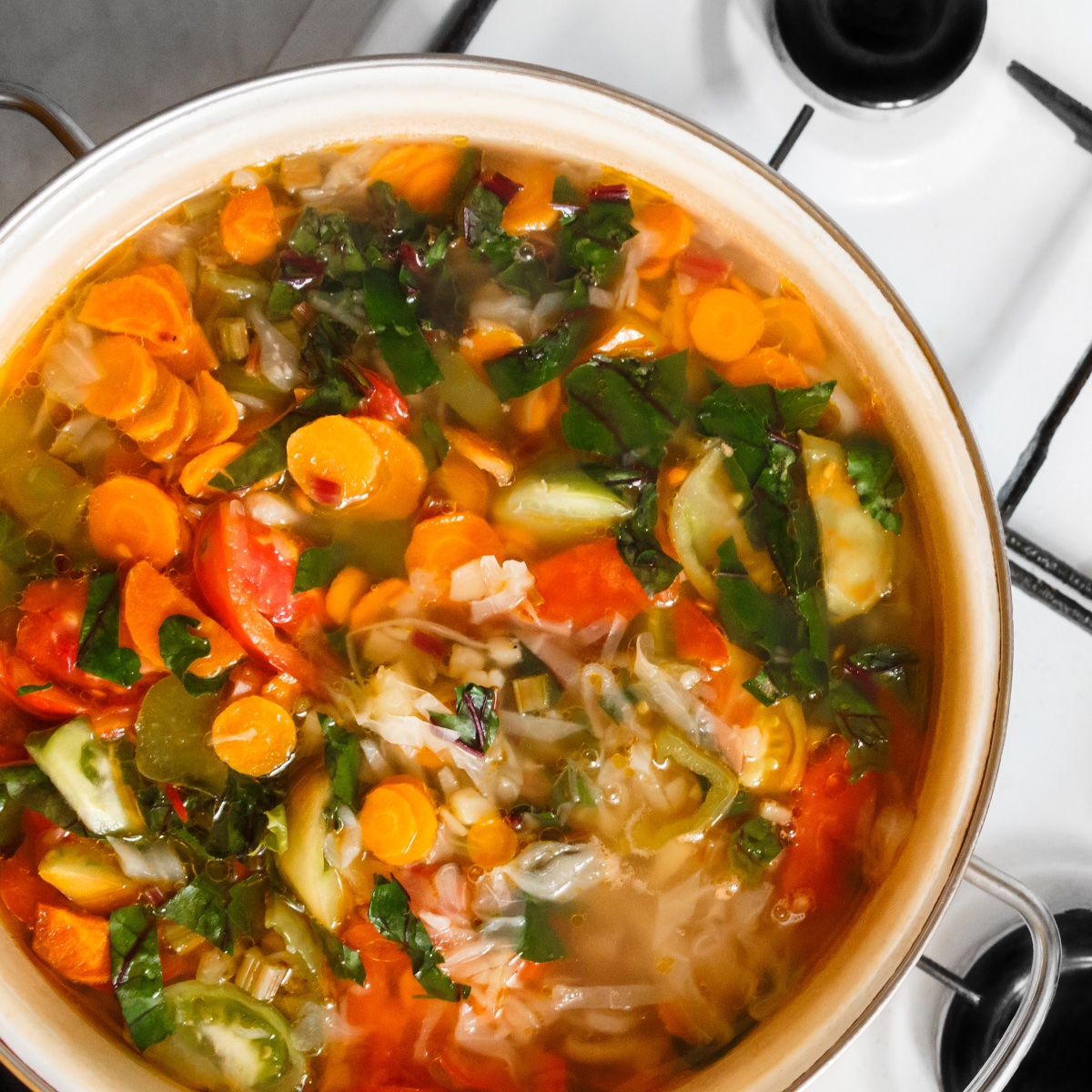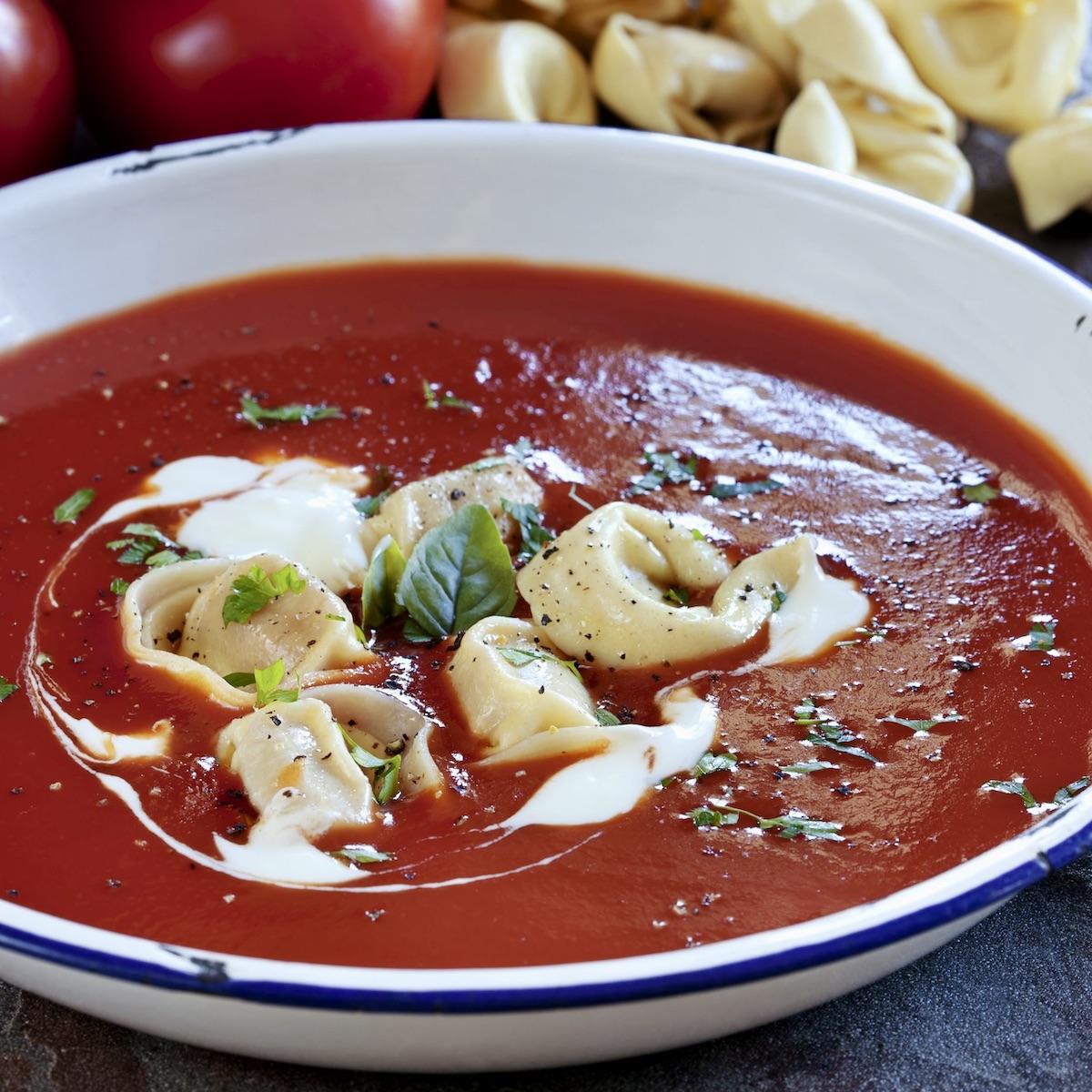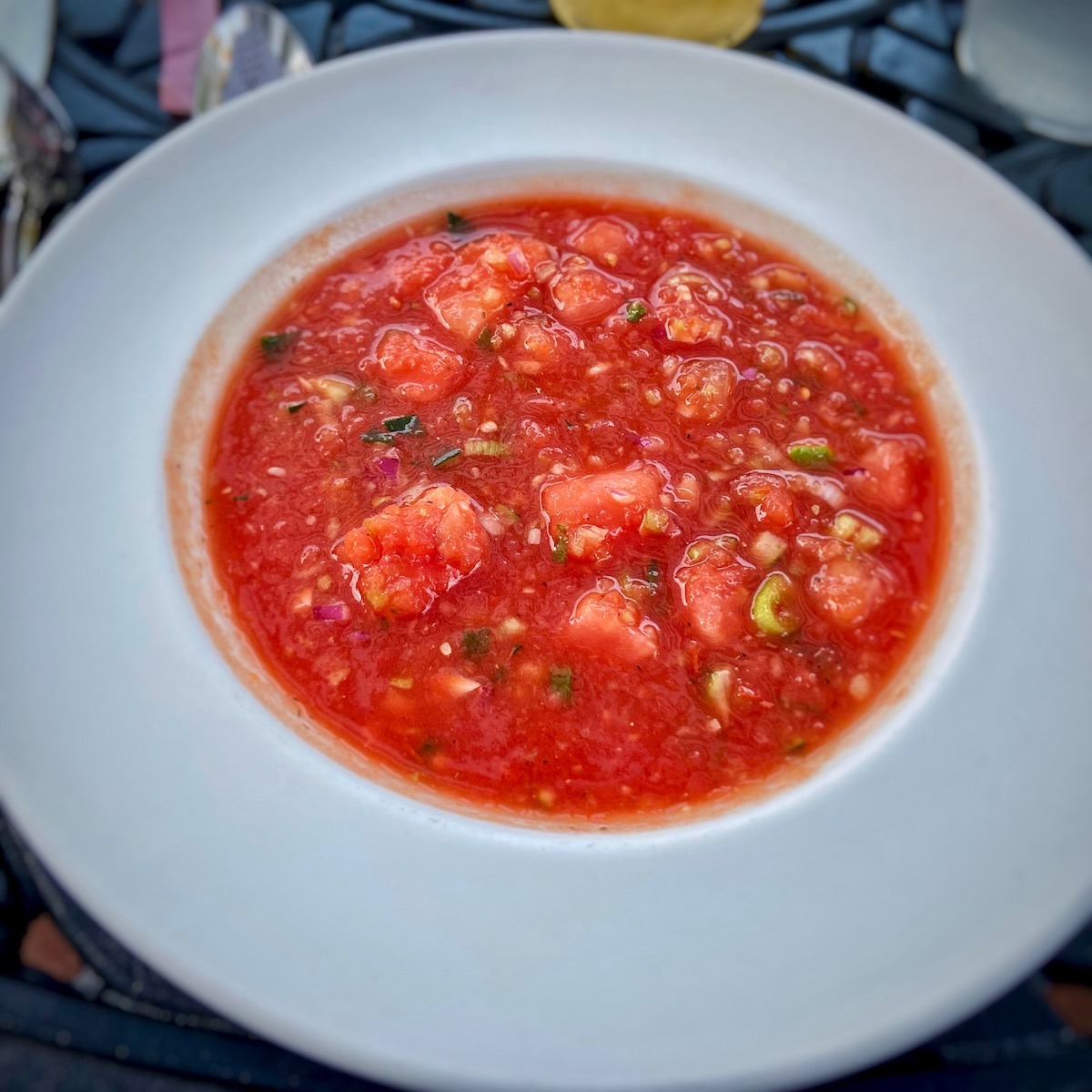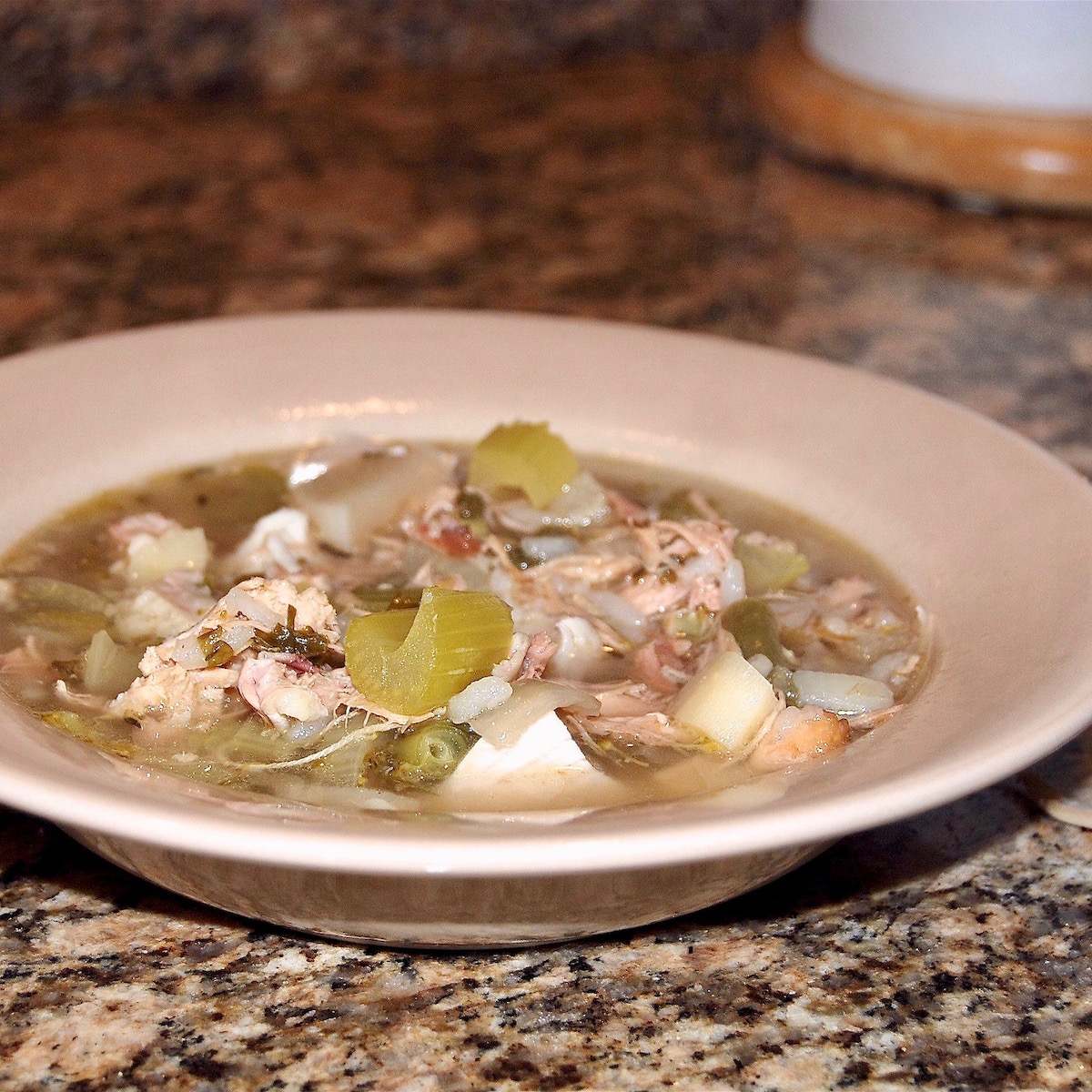


Everything You Need to Know About Soup
Soup is a warm and comforting dish that has been a staple in many cultures and cuisines for centuries. At its most basic level, soup is a liquid dish made by simmering vegetables, meat, or other ingredients in a broth or water. However, the possibilities for soup are endless, and it can be made in countless variations to suit any taste preference.
One of the great things about soup is its versatility. It can be a simple, nourishing meal or paired with bread, crackers, or other accompaniments to create a more substantial meal. Soup can be served hot or cold, depending on the recipe and the season, and it can be adapted to suit a wide range of dietary needs and restrictions.
There are many different types of soup, each with its unique flavor profile and ingredients. The most popular varieties include chicken noodle soup, tomato soup, minestrone, split pea soup, and clam chowder. Each of these soups has a distinct taste and texture, and they can be made with various ingredients to create different variations.
Soup is also a great way to incorporate more vegetables and other healthy ingredients into your diet. Many soups are packed with vitamins, minerals, and other essential nutrients, making them a nutritious and satisfying meal option. Additionally, soup can be a great way to use up leftovers or excess ingredients, reducing waste in the kitchen and saving money in the process.
Soup is a comforting, nourishing, and endlessly adaptable dish that has been a favorite of home cooks and chefs for centuries. Whether you prefer a classic chicken noodle soup or a more adventurous spicy lentil soup, there’s a soup recipe for everyone.

Who Invented Soup?
Soup’s origins are partially clear, as combining ingredients in a broth or liquid to create a nourishing and comforting meal is likely as old as cooking itself. However, it is believed that soup has been a part of human cuisine for thousands of years.
Archaeological evidence suggests that soup was consumed by ancient civilizations such as the Greeks, Romans, and Chinese. In ancient Greece, soup was known as “sitos” and was made with barley, vegetables, and meat. The Romans also enjoyed soup, often made with vegetables, meat, and grains, and served it as a starter course in their elaborate feasts.
In China, soup has been a cuisine staple for thousands of years, and many different types of soups are consumed for their health benefits and flavor. Traditional Chinese soups often include herbs, spices, and medicinal ingredients and are thought to promote overall health and well-being.
Notably, soup likely evolved independently in different cultures and regions, with each cuisine developing unique variations and techniques for making this comforting and nourishing dish. So, while we may not know exactly who invented soup, we do know that it has been a beloved and essential part of human cuisine for thousands of years.
Where Does the Word Soup Come From?
The word “soup” comes from the French word “soupe”, initially referring to a broth or liquid dish poured over slices of bread. The word “soupe” is derived from the Latin word “suppa”, which means “bread soaked in broth”. Bread as a base for soups and stews was common in Europe during the Middle Ages when bread was a staple food and often used as a utensil.
Over time, the word “soup” came to refer more broadly to any dish made by simmering ingredients in a liquid. Today, soup is a staple in many cultures and cuisines worldwide, and there are countless variations and recipes for this comforting and nourishing dish.
What Is the History of Soup?
Soup has a long and rich history, dating back to ancient civilizations such as the Greeks, Romans, and Chinese. In many cultures, soup was a simple and practical dish that combined leftover ingredients with water or broth to create a nourishing meal. Over time, soup evolved into a more complex and flavorful dish, with the addition of herbs, spices, and other seasonings.
During the Middle Ages, soup became a staple in European cuisine, with bread often used as a base for soups and stews. In many parts of Europe, soup was served as a starter course in elaborate feasts, and it was considered a sign of hospitality to offer guests a bowl of soup.
In the 18th and 19th centuries, soup kitchens became popular in many cities to provide nourishing meals to the poor and hungry. During World War I and World War II, soup became a vital part of soldiers’ rations, and canned soups such as Campbell’s became popular in many households.
Today, soup remains a beloved and versatile dish enjoyed in many different forms and variations worldwide. From classic chicken noodle soup to hearty beef stews and spicy lentil soups, there is a soup recipe to suit every taste preference and dietary need.
With the rise of plant-based diets and increased interest in global cuisine, soups made with lentils, beans, and exotic spices are becoming increasingly popular.


Five Fun Facts
- Soup is one of the oldest dishes in the world: Soup has been around for thousands of years and is believed to have been one of the first cooked dishes in human history. Archaeologists have found evidence of soup-making dating back to 20,000 BC.
- Soup can be a complete meal: Depending on the ingredients, soup can be a complete and nutritious meal. It can include protein, vegetables, grains, and other essential nutrients, making it a popular dish for people on the go or those who want a simple yet satisfying meal.
- Soup is a universal dish: Soup is enjoyed in almost every culture worldwide, with countless variations and regional specialties. From pho in Vietnam to minestrone in Italy, soup is a dish that has been adapted and enjoyed by people all over the globe.
- Soup can be served hot or cold: While most people think of soup as a hot and comforting dish, many soups, such as gazpacho or vichyssoise, are served cold. These chilled soups are a refreshing option for warm weather or as a starter to a meal.
- Soup has been used for medicinal purposes: Throughout history, soup has been used for medicinal purposes, such as to cure colds or aid digestion. Chicken soup, in particular, is a remedy for the common cold, with some studies suggesting that it can help reduce inflammation and alleviate symptoms.
What are the Ten Most Popular Soups in the United States?
Here are ten of the most popular soups in the United States, listed in no particular order:
- Chicken noodle soup – a classic soup made with chicken, vegetables, and noodles in a flavorful broth.
- Tomato soup – a smooth and creamy soup made with ripe tomatoes, often served with grilled cheese.
- Clam chowder – a thick and hearty soup made with clams, potatoes, and bacon.
- Minestrone – a vegetable soup made with various vegetables, beans, and pasta.
- Split pea soup – a thick and hearty soup made with split peas and ham or bacon.
- French onion soup – a rich and flavorful soup made with caramelized onions and beef broth, often topped with melted cheese and croutons.
- Chili – a hearty and spicy soup made with ground beef or turkey, beans, and chili peppers.
- Broccoli cheddar soup – a creamy and comforting soup made with broccoli and melted cheddar cheese.
- Beef stew – a hearty and filling soup made with beef, vegetables, and potatoes in a flavorful broth.
- Potato soup – a creamy and satisfying soup made with potatoes, often flavored with bacon or cheese.
What Are the Five Most Popular Soups Outside the United States?
Soups are a beloved and essential part of cuisines worldwide, and there are many popular soups outside the United States. Here are five examples of soups that are widely enjoyed outside the U.S.:
- Pho – a Vietnamese soup made with rich beef or chicken broth, rice noodles, and herbs, often served with meat or seafood.
- Gazpacho – a cold Spanish soup made with tomatoes, peppers, cucumber, and bread, usually served in the summer months.
- Miso soup – a traditional Japanese soup made with miso paste, tofu, and seaweed, often served as a breakfast dish.
- Borscht – a hearty and flavorful Russian soup made with beets, cabbage, and beef or chicken broth, often served with sour cream.
- Tom yum – a spicy and sour Thai soup made with lemongrass, chili peppers, shrimp or chicken, and mushrooms, often served with rice or noodles.
Ten Secrets to Great Soup
- Use quality ingredients: The flavor of your soup will be significantly influenced by the quality of the ingredients you use. Use fresh, high-quality vegetables, meats, and stocks to make a delicious and flavorful soup.
- Layer your flavors: Building flavors in layers is a great way to develop depth and complexity in your soup. Start by sautéing aromatic vegetables like onions, garlic, and celery, and then add herbs and spices. Next, add your main ingredients and let them simmer together to develop flavor.
- Don’t skimp on seasoning: Proper seasoning is essential to creating a tasty soup. Add enough salt and pepper, and taste as you go. Remember that flavors will concentrate as the soup cooks, so seasoning early and adjusting as needed is essential.
- Cook your soup low and slow: Simmering your soup over low heat for a long time will allow the flavors to develop and intensify. Be patient and let the ingredients meld together for the best flavor.
- Let your soup rest: After cooking, let your soup rest for a little while to allow the flavors to develop further and meld together. This will also allow any excess fat or impurities to rise to the surface, which can be skimmed off for a cleaner soup.
- Use the right pot: Choosing the right pot for your soup can make a big difference. A heavy-bottomed pot with a lid will help distribute heat evenly and prevent burning, while a larger pot will allow room for ingredients to simmer and blend together.
- Don’t overcook your vegetables: Overcooked vegetables can become mushy and lose flavor and texture. Add vegetables to the cooking process’s end to prevent this, and avoid over-stirring them.
- Use homemade stock: Homemade stock is a great way to elevate the flavor of your soup. It’s easy to make and can be made in advance and stored in the freezer for future use. Make chicken, beef, or vegetable stock for a richer, more flavorful soup.
- Add acidity: Adding a small amount of acid to your soup, such as lemon juice or vinegar, can help brighten the flavors and cut through the richness. Be careful not to overdo it, as too much acid can overpower the other flavors.
- Finish with fresh herbs: Adding fresh herbs like parsley, cilantro, or basil at the end of the cooking process can add a burst of fresh flavor to your soup. Chop the herbs and sprinkle them over the soup before serving.
When to Add the Salt?
Adding salt to soup towards the beginning of the cooking process is generally recommended. Adding salt early on will allow it to penetrate the ingredients and enhance their flavor as they cook. Additionally, adding salt at the beginning will ensure that the salt is well-distributed throughout the soup.
It’s important not to over-salt your soup initially, as flavors can concentrate as the soup cooks and the liquid reduces. It’s a good idea to taste the soup periodically as it cooks and adjust the seasoning as needed by adding more salt, herbs, or spices.
What Is Birds Nest Soup?
Bird’s Nest Soup is a traditional Chinese delicacy made from the nests of swiftlets, a small bird found in Southeast Asia. These nests are made from the bird’s saliva and are harvested from caves or man-made structures. The nests are cleaned, soaked, and simmered in a chicken or pork broth to make the soup.
Bird’s Nest Soup is considered a delicacy known for its high price and rarity. The soup is said to have various health benefits and is believed to boost the immune system and improve digestion. However, Bird’s Nest Soup has become controversial due to its high cost and the environmental impact of harvesting swiftlet nests.
While Bird’s Nest Soup may not be the most outrageous soup ever created, it is unique and has a long history in Chinese cuisine.


The Difference Between Soup and Broth?
Soup and broth are similar in that they involve cooking ingredients in liquid. However, there are some key differences between the two:
- Ingredients: Soup is typically made with various ingredients, such as vegetables, meat, beans, or grains, whereas broth is typically made with a few key ingredients, such as bones or vegetables.
- Thickness: Soup is usually thicker and heartier than broth, as it often includes solid ingredients and is meant to be a more substantial dish. The broth is thinner and more liquid and is often used as a base for other dishes, such as soups, stews, or gravies.
- Flavor: Soup is often seasoned with herbs, spices, or other flavorings to enhance the taste, whereas broth is usually left unseasoned or lightly seasoned to allow the natural flavors of the ingredients to shine through.
- Cooking time: Soup usually takes longer to cook than broth, as it requires the flavors of the ingredients to meld together and become more complex. Broth can be made relatively quickly, as it only requires simmering the ingredients for a shorter period.
Fun Quotes
- “Soup is a lot like a family. Each ingredient enhances the others; each batch has its own characteristics; and it needs time to simmer to reach full flavor.” – Marge Kennedy.
- “Good soup is one of the prime ingredients of good living.” – Louis P. De Gouy.
- “A world without tomato soup is a world not worth living in.” – Laurie Colwin.
- “Soup is a way of life, and the fact that so many people still think of it as just a starter is a travesty.” – Yotam Ottolenghi.
- “Soup puts the heart at ease, calms down the violence of hunger, eliminates the tension of the day, and awakens and refines the appetite.” – Auguste Escoffier.
Some of My Favorite Soup Recipes
 Print
Print






